The time of the jams
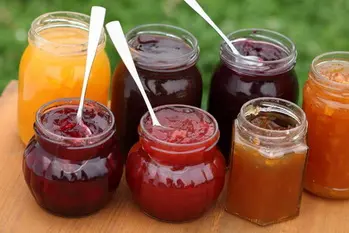
We are well into summer as I write this, and this is the time when most of the fruit is giving or about to give in full.
And for many of us, it will also be the time for jams and jellies, one of the best ways to preserve fruit for the next winter.
And for many of us, it will also be the time for jams and jellies, one of the best ways to preserve fruit for the next winter.
25 K 4.5/5 (23 reviews)
Keywords for this post:JamJellySummerFruitSugarGelling agentSyrupLast modified on: July 12th 2021
The time of the jams
In principle, jam is very simple, you mix sugar and fruits in variable proportions, and you cook it until it thickens.
For jelly, it's the same except that instead of fruit you use fruit juice or pulp only.
It is necessary to start well the process and not to make a mistake, good jam = beautiful fruits at the beginning, it would be a mistake to use fruits a little neutral in taste, or a little spoiled, thinking that in the jam it will pass.
It's almost the opposite, you need very nice/good fruits to make a very good jam.
Later, when you prepare your fruits, systematically eliminate all the spoiled or weak parts, you must keep only the best of the fruits.
The more sugar you put in, the more easily it takes, but the less it tastes like fruit.
Commercial jams, for example, are generally very sweet, probably too much so, because sugar is much cheaper than fruit, and it's a question of money as usual.
A 50% fruit 50% sugar is already very good, but at home you can reduce it to 40% sugar (the ideal rate for me).
This sugar rate is also a question of taste, but also of time, jams now are much less sweet than in the past, and it's a good thing, an apricot jam for example, should have a very clear apricot taste, and not a sweet taste with an apricot background.
You can cook the sugar/fruit mixture directly, adding a little water to thin it out, but this is not a very good option as the water will have to be boiled off afterwards.
There is a much better solution, which I already told you about in a previous article, which is to put the chopped fruits and the sugar together for at least 4 hours, or one night, and the whole thing forms a syrup (the hygroscopic side of the sugar) which can be cooked directly.
To obtain a jam, it is a mixture which thickens, just enough...
To obtain this thickening, there are 2 ways :
- The old way, used by our grandmothers, which consists in cooking the mixture, (very) long to bring the sugar to 110°C, temperature where it thickens the whole mixture.
- The more modern way is to use a gelling agent: pectin, agar-agar, gelatine... which are active at 100°C or even lower.
The old method, long cooking, which may seem "natural", has the big defect of reducing the taste of fruits, especially with delicate fruits like strawberries for example.
The new method allows a short cooking, we bring to boil, we add the gelling agent (the famous"Vit'pris" in France which is apple pectin) and after 2 or 3 minutes of boiling the jam is ready.
As for me, I'm an unconditional fan of the use of the gelling agent, pectin, which is neutral in taste, and it's very efficient to make a good jam or jelly.
Once the jam is ready, you have to put it in a jar, it is not very complicated, but it is very important to make sure that the inside of the jar remains sterile.
And for that, there is a very effective trick: Pour the burning jam in the jar, close it and turn it upside down (take gloves), wait 1 minute, then put it back.
By doing this, the air in the jar will pass through the burning jam and become sterilized, so you will have jam jars that can easily be kept for several months, and out of the fridge.
Here are some tracks for your future jams, can you enjoy the beautiful fruits of the summer to come.
To sum up: For good jams, choose beautiful fruits, make a syrup, cook a little (with a gelling agent), and sterilize your jars by turning them over.
For jelly, it's the same except that instead of fruit you use fruit juice or pulp only.
Some important points
The quality of the fruits

It is necessary to start well the process and not to make a mistake, good jam = beautiful fruits at the beginning, it would be a mistake to use fruits a little neutral in taste, or a little spoiled, thinking that in the jam it will pass.
It's almost the opposite, you need very nice/good fruits to make a very good jam.
Later, when you prepare your fruits, systematically eliminate all the spoiled or weak parts, you must keep only the best of the fruits.
The sugar-fruit ratio
The more sugar you put in, the more easily it takes, but the less it tastes like fruit.
Commercial jams, for example, are generally very sweet, probably too much so, because sugar is much cheaper than fruit, and it's a question of money as usual.
A 50% fruit 50% sugar is already very good, but at home you can reduce it to 40% sugar (the ideal rate for me).
This sugar rate is also a question of taste, but also of time, jams now are much less sweet than in the past, and it's a good thing, an apricot jam for example, should have a very clear apricot taste, and not a sweet taste with an apricot background.
The syrup
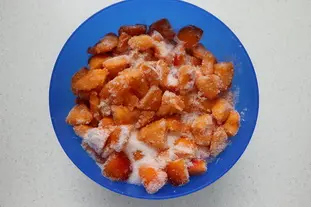
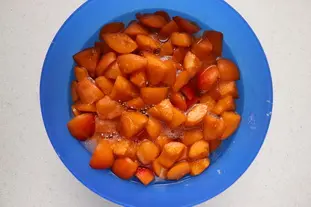
You can cook the sugar/fruit mixture directly, adding a little water to thin it out, but this is not a very good option as the water will have to be boiled off afterwards.
There is a much better solution, which I already told you about in a previous article, which is to put the chopped fruits and the sugar together for at least 4 hours, or one night, and the whole thing forms a syrup (the hygroscopic side of the sugar) which can be cooked directly.
Thickening
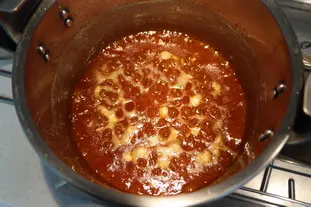
To obtain a jam, it is a mixture which thickens, just enough...
To obtain this thickening, there are 2 ways :
- The old way, used by our grandmothers, which consists in cooking the mixture, (very) long to bring the sugar to 110°C, temperature where it thickens the whole mixture.
- The more modern way is to use a gelling agent: pectin, agar-agar, gelatine... which are active at 100°C or even lower.
The old method, long cooking, which may seem "natural", has the big defect of reducing the taste of fruits, especially with delicate fruits like strawberries for example.
The new method allows a short cooking, we bring to boil, we add the gelling agent (the famous"Vit'pris" in France which is apple pectin) and after 2 or 3 minutes of boiling the jam is ready.
As for me, I'm an unconditional fan of the use of the gelling agent, pectin, which is neutral in taste, and it's very efficient to make a good jam or jelly.
The sterilization
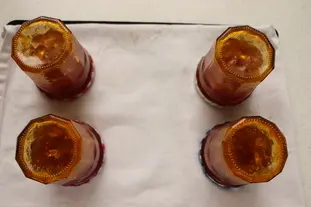
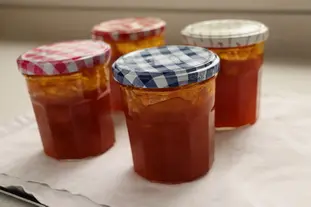
Once the jam is ready, you have to put it in a jar, it is not very complicated, but it is very important to make sure that the inside of the jar remains sterile.
And for that, there is a very effective trick: Pour the burning jam in the jar, close it and turn it upside down (take gloves), wait 1 minute, then put it back.
By doing this, the air in the jar will pass through the burning jam and become sterilized, so you will have jam jars that can easily be kept for several months, and out of the fridge.
Here are some tracks for your future jams, can you enjoy the beautiful fruits of the summer to come.
To sum up: For good jams, choose beautiful fruits, make a syrup, cook a little (with a gelling agent), and sterilize your jars by turning them over.
Lasts posts
Should potatoes be washed twice?
Let's say you have to make a recipe that includes potatoes, let's say sliced, you'll most likely proceed as follows: Peel the potatoes, wash them, slice them, wash them again, pat them dry and add them to your recipe. But there's a "but": depending on the recipe, the second washing may be a bad...May 19th 20252,061 15
Grilled bacon is much better in the oven
Some recipes call for thin slices of bacon to be cooked and added to the recipe, or to prepare one of those delicious breakfasts known as "à l'Anglaise".April 25th 20251,9235
The thermometer is your friend
There are many recipes or foods that require a (very) precise cooking temperature: foie gras, sugar for caramel, meats and fish, and not forgetting pastries. For these few examples, getting the cooking temperature wrong can spoil the whole recipe or dish: undercooked, it's no good or misses the...April 10th 20252,2625
Travel cakes
You may have come across the term "travel cakes" ("gateaux de voyage" in french) for certain pastries, so let's take a look at what they're all about.January 27th 20253,719
The aromatic power of sugar
In the kitchen, sugar doesn't just sweeten, it also has an exceptional ability to capture flavors. Combined with aromatic ingredients, such as citrus zest, it acts as a veritable sponge for aromas. By taking the time to let the sugar soak up the flavors, you can transform your desserts, making...December 25th 20244,1625
Other pages you may also like
The different cooking modes
In cooking, cooking means bringing food into contact with a source of heat, to transform it: improving its taste, and sometimes its texture. This contact with the heat source can be achieved in a number of ways: these are the cooking methods, and let's take a look at the main ones.July 24th 20246,0444.7
Sausage broth
I've already talked to you about vegetable cooking water, which becomes a precious broth after cooking that would be a shame to throw away. Now let's look at the special case of meat cooking broth, and in particular sausages, which are often poached.June 28th 20238,5385
The little trap of thick cream
When you need to add cream to a recipe, you might be wondering: thick (heavy) cream or liquid cream? In most cases, there's no big difference: you can use either. But there is one exception, and that's when the cream needs to be cooked, for a sauce for example, and here the difference between...December 13th 20244,1435
Fruits which can ruin your jelly
There are many ways of making a fruit mousse, but one of the simplest is to prepare a fruit jelly (basically a fresh fruit coulis with gelatine) and then mix this jelly before it sets completely with whipped cream. The result is perfect for filling a charlotte, for example. But do beware;...March 6th 201374 K4.0
What is the difference between bakery and patisserie?
This is a question that you may well have asked yourself and which I will attempt to answer. In France the two trades of "boulangerie" (bakery) and "pâtisserie" (patisserie and confectionery) have always been quite distinct, but where exactly do the boundaries lie? .February 7th 2017129 K 14.1
Post a comment or question
Follow this page
If you are interested in this page, you can "follow" it, by entering your email address here. You will then receive a notification immediately each time the page is modified or a new comment is added. Please note that you will need to confirm this following.
Note: We'll never share your e-mail address with anyone else.
Alternatively: you can subscribe to the mailing list of cooling-ez.com , you will receive a e-mail for each new recipe published on the site.









